I'm repairing this amp for a friend. But I've read online that brax amps have life time warranty with no worries about new owner. I notice it doesn't have a serial number so i guess sending it to the manufacture is out of the question.
My friend stated that his brother hook the power backwards and smelled something burning. Then never cut on.
Once i opened it i notice that the ground trace on the power stabilizer terminals shorted and the copper trace is lifted from the pcb. Three if the six power fets are obviously blown.
Any thing else i need to check before ordering fets and trying to fix the ground trace?
Thanks in advance.
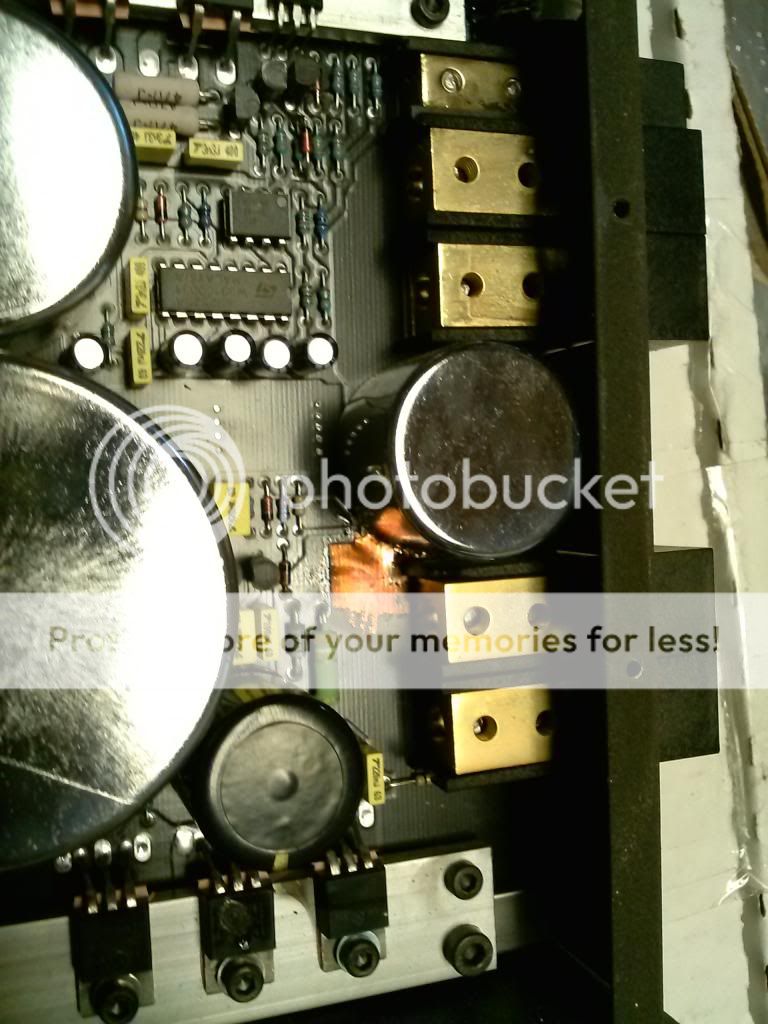
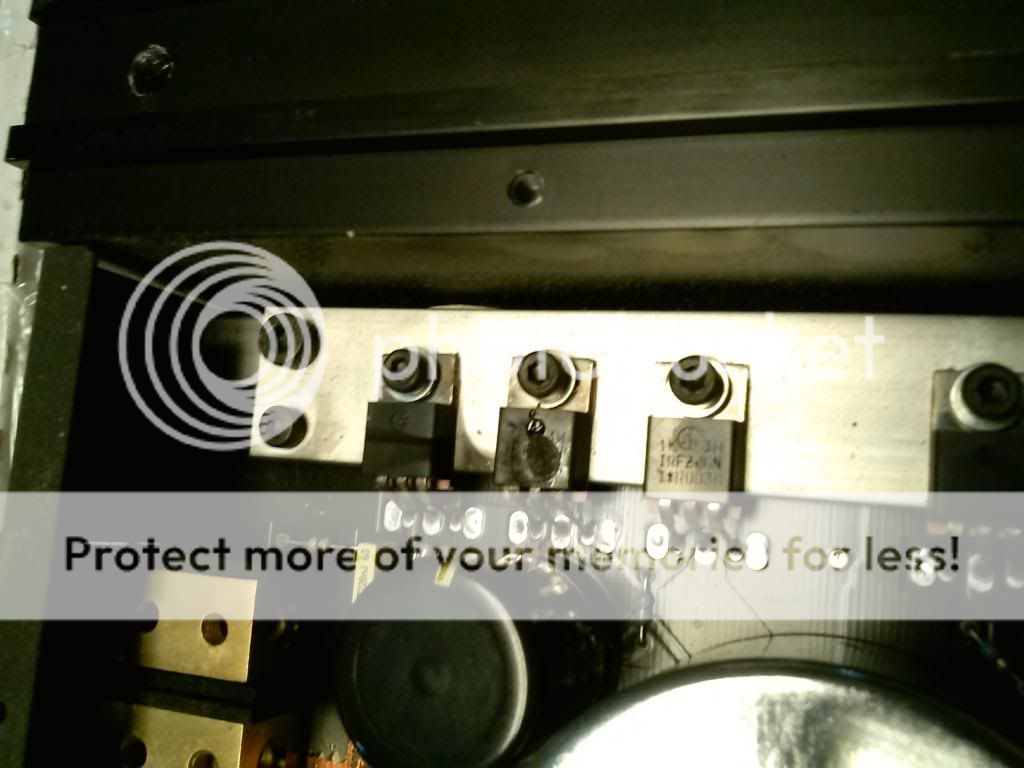
My friend stated that his brother hook the power backwards and smelled something burning. Then never cut on.
Once i opened it i notice that the ground trace on the power stabilizer terminals shorted and the copper trace is lifted from the pcb. Three if the six power fets are obviously blown.
Any thing else i need to check before ordering fets and trying to fix the ground trace?
Thanks in advance.


Last edited:
The gate resistors and whatever is driving the blown FETs.
Did you check the other power supply FETs? Even if they don't appear blown, they may be. They should be replaced regardless but if they're blown, you need to check their drive circuit as well.
Did you check the other power supply FETs? Even if they don't appear blown, they may be. They should be replaced regardless but if they're blown, you need to check their drive circuit as well.
Thanks Perry, I've read your tutorial (got the full version) and successfully repaired a few with the help of Cecil and yours.
I planned on replacing all the fets. I'll check the drivers, i can't find the owners manual any where, I'm assuming the power stabilizer terminals are for some sort of capacitor (brax, duh,lol) but is it needed when powering up? Its just tied to the power input terminals, besides the ground since shorted/opened.
I planned on replacing all the fets. I'll check the drivers, i can't find the owners manual any where, I'm assuming the power stabilizer terminals are for some sort of capacitor (brax, duh,lol) but is it needed when powering up? Its just tied to the power input terminals, besides the ground since shorted/opened.
If the terminals for the stabilizer are directly connected to the power and ground terminals, you're likely correct and it's for a cap. An external cap shouldn't be required for the amp to work properly.
If the amp has a reverse-protection diode, you should check it as well.
If the amp has a reverse-protection diode, you should check it as well.
It has it on power input terminals but not on the power stabilizer terminals hance that's probably why the grounded opened?
Correction, i don't see any diodes on the b+ input. Why are the transformers covered up in those cases? Am worried the broken ground trace may short the case of the transformer, which the case looks metallic but i believe its plastic with a layer of electroplating.
It sounds as if the case around the transformer is purely cosmetic.
Is the electroplating conductive?
Do you see any direct connection (with your multimeter) between the case and the trace?
Is the electroplating conductive?
Do you see any direct connection (with your multimeter) between the case and the trace?
It fluctuates around 300 ohms on the casing. So am pretty sure its cosmetics. But that's where my damage trace is, right below the casing.
I don't see any rp diode by the power inputs. Check out the pics hopefully you can make out why it has a transformer between the power input and the power stabilizer terminals.
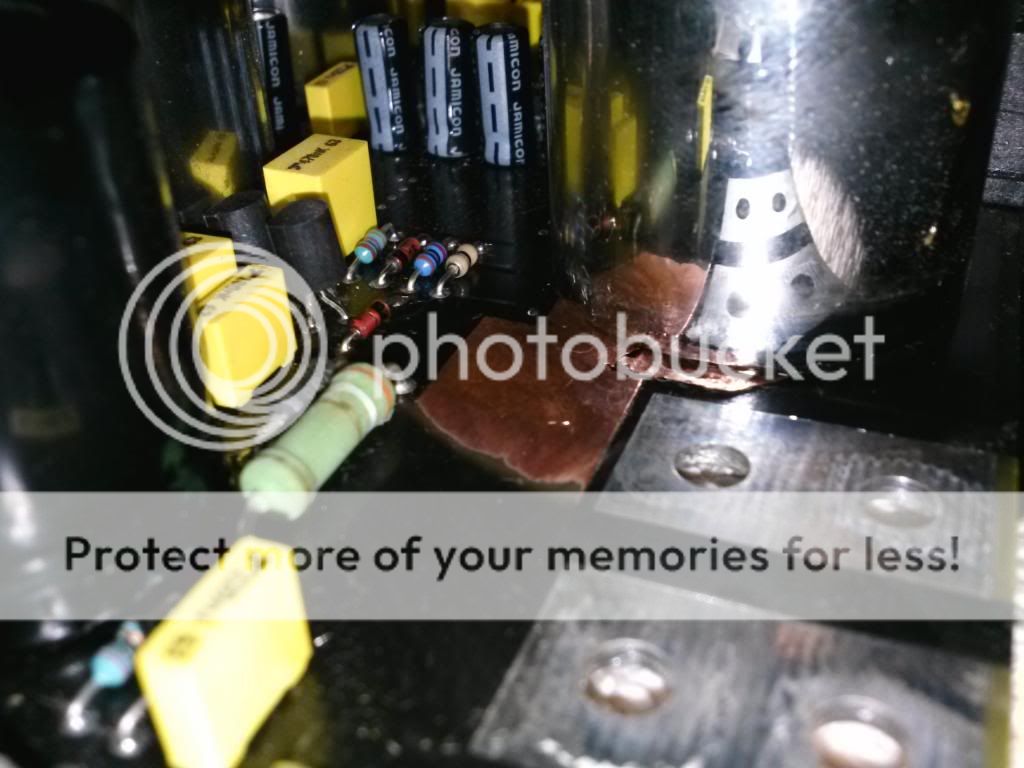
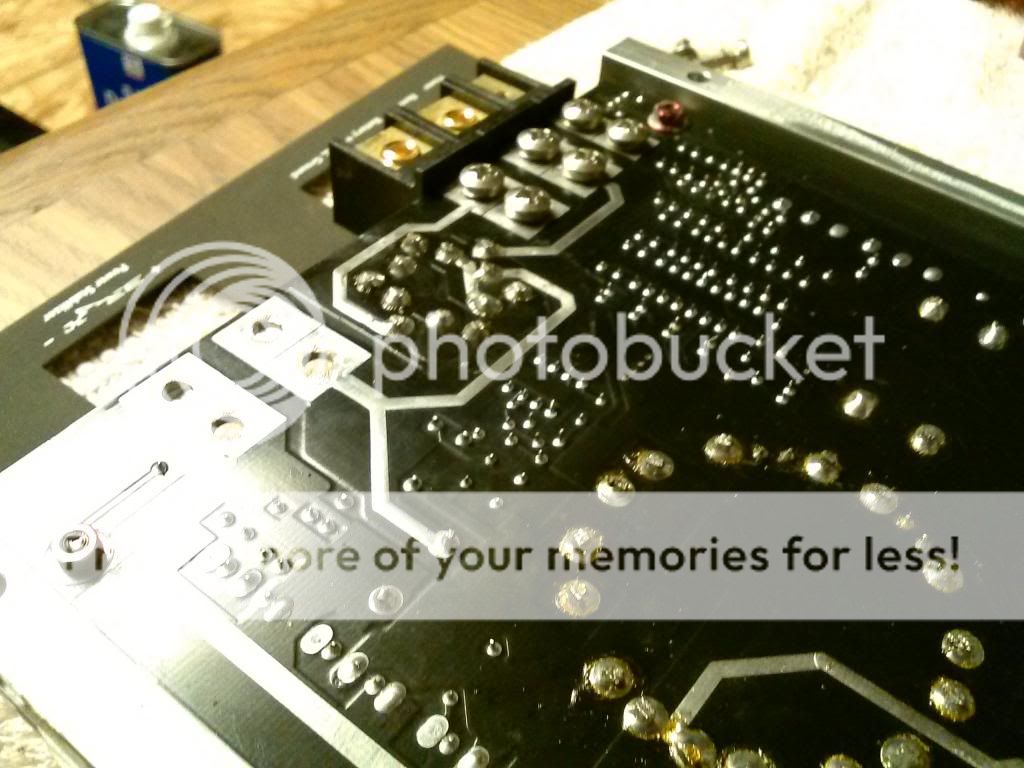
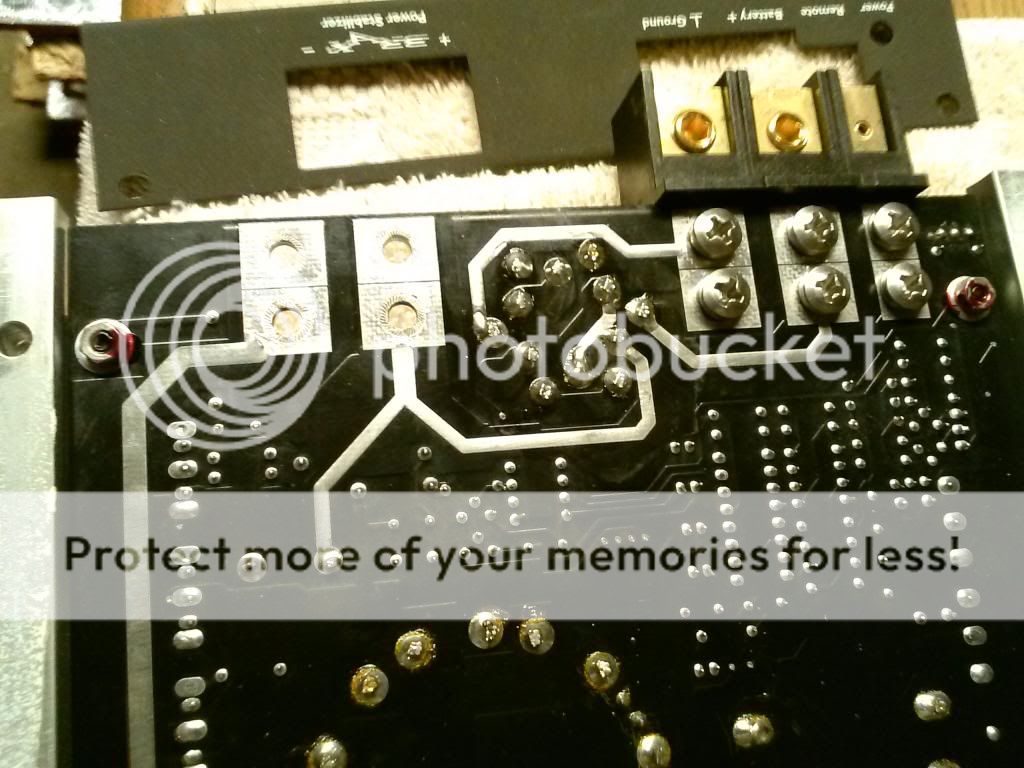
Perry feel free to save my pics for your tutorial. If you need more let me know.
I don't see any rp diode by the power inputs. Check out the pics hopefully you can make out why it has a transformer between the power input and the power stabilizer terminals.



Perry feel free to save my pics for your tutorial. If you need more let me know.
It sounds as if the case around the transformer is purely cosmetic.
Is the electroplating conductive?
Do you see any direct connection (with your multimeter) between the case and the trace?
Yes but only if i lift the trace to where it touches the casing. That's why I'm curious to why use such casing? It fluctuates though and its around 300 ohms.
Sometimes it's used for shielding but the shield is generally copper and it's grounded at several points around the transformer to the primary ground.
Wonder if its copper inside, i thought about trimming a little right where my damaged trace its to prevent contact and in order to fix the trace. Or should i desolder it in order to fix the trace? I know its a pita removing transformers since all the solder they have.
But this casing is not grounded, when u checked it with my meter it was open (between case and ground)
But this casing is not grounded, when u checked it with my meter it was open (between case and ground)
Last edited:
If you're referring to the component between the terminals, I think that's either a capacitor or an inductor. If so, there are likely only 2 terminals to desolder.
I believe its a transformer simply because it has 12 pins that look like stranded wire. Check the pics i posted (bottom view of the pcb)
When I come back to a thread, I always go to the last post so I missed those photos. If you post twice since I've last replied, you should mention the other posts.
I've emailed someone to see if they could tell me what that part is.
I've emailed someone to see if they could tell me what that part is.
Sorry and will do, i see your helping everyone and i would like to appreciate your time and effort.
Let me know what you find out.. Trace can be fixed in the bottom of the pcb since i know where its going on top. Just don't know what would be reliable, solid 12g copper wire?
Let me know what you find out.. Trace can be fixed in the bottom of the pcb since i know where its going on top. Just don't know what would be reliable, solid 12g copper wire?
I would use several passes of desoldering braid saturated with solder. I think you should be able to repair it without removing the component above the trace. You could slide a piece of Kapton between the trace and the device to prevent contact.
Ok. I'll try to repair it without removing it, I'll solder a solid copper wire underneath the pcb.I'll order the irfz46n.
When i checked the driver outputs i notice the two ch's on one side read very different from the other side.For example, one side read 6k ohms while the other side was 3m ohms.
Should i replace the b+ caps since their in the circuit of the damaged trace, they are 5000uf 18v audio grade caps. Don't know if they got damaged. But I'll remove one and check the capacitance but that's as fat as i can check until i get a the proper equipment for testing caps.
When i checked the driver outputs i notice the two ch's on one side read very different from the other side.For example, one side read 6k ohms while the other side was 3m ohms.
Should i replace the b+ caps since their in the circuit of the damaged trace, they are 5000uf 18v audio grade caps. Don't know if they got damaged. But I'll remove one and check the capacitance but that's as fat as i can check until i get a the proper equipment for testing caps.
Last edited:
If they didn't vent or leak, they're likely OK.
Audio-grade caps on the primary side of the supply?
The guy I emailed had to check with someone else so I'm still waiting.
Audio-grade caps on the primary side of the supply?
The guy I emailed had to check with someone else so I'm still waiting.
Sorry not audio grade caps, they are 5000uf 18v and there is two of them.
In order to make the repair reliable i would have to remove the component that's above the damaged trace (in thus case maybe a transformer, like the ones the old school pg's used -- and other similar designs).
I don't want a damaged trace underneath that big component.
In order to make the repair reliable i would have to remove the component that's above the damaged trace (in thus case maybe a transformer, like the ones the old school pg's used -- and other similar designs).
I don't want a damaged trace underneath that big component.
- Status
- Not open for further replies.
- Home
- General Interest
- Car Audio
- Brax X1400 blown fets. Help.